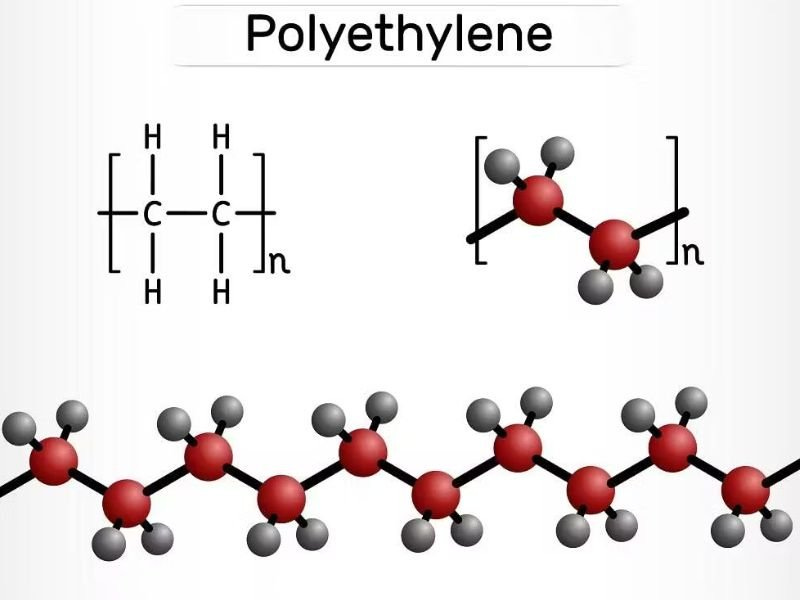Let’s talk about “forever chemicals”, or PFAS. Most of my messaging around NeutraOat has been around its effects on plasticizers and BPA, but NeutraOat works generally to bind any small hydrophobic molecules, PFAS included. The public messaging around the distinctions between microplastics, plasticizers, and PFAS has been muddled, to say the least, which is why I haven’t talked about this side of NeutraOat before (see diagrams throughout this blogpost for a quick breakdown on the chemical differences). But, maybe it’s time to start.

Let’s start with what PFAS are. PFAS are per- and polyfluoroalkyl substances. If we break that compound word down, we get a reasonable idea of the general PFAS structure. They contain fluorine connected to alkyl groups. Alkyl groups are hydrocarbon groups that have replaced their hydrogens with something else. In PFAS, either all (per-) or many (poly-) of the hydrogens have been replaced by fluorine.
This carbon-fluorine bond is hydrophobic and incredibly strong, because the carbon is fully shielded and not polarizable. Chaining these fluoroalkyl groups together gives a very strong, hydrophobic backbone. Chemists then often attach different polar heads or side chains to the backbone to create different effects, such as water solubility.
The first PFAS developed was Teflon back in the 30s. It was the simplest possible PFAS, in that it was purely composed of a perfluoroalkyl backbone. This made it incredibly hydrophobic, temperature stable, and slippery (no Van der Waals forces). Teflon only had limited use in specific industrial context until a couple entrepreneurs figured out that it made for a great coating for kitchen pans, making them “non stick”. Then production skyrocketed. Nowadays, it’s actually most commonly used as an insulator, exploiting its greedy tendency to refuse to share its electrons with current passing by, which is the same tendency that makes it so slippery.
Following the invention of Teflon, many, many different types of PFAS were invented. As it turns out, a coating or substance that is very stable, hydrophobic, non-reactive, and a great thermal and electrical insulator is useful for all sorts of things. It’s useful for making waterproof fabric, mobile phone screens, firefighting foams, tampon applicators, and lipstick, with slight chemical changes needed depending on the specific application. For example, shorter chain PFAS are more water soluble, so are more useful when you don’t want your PFAS to last quite as long1.

All of this is great for your standard 50s housewife, who can cook with her Teflon pan, look good for her husband in her Nylon stockings, impress the gals at the beauty counter with her waterproof liquid lipstick, and then avoid any unsightly spotting on her white pants with her stainproof sanitary napkin. The problem is what happens to her 20 years later, when the PFAS has entered her body and is still around.
You see, it’s not just the heat from your stove, the dishwashing soap in your kitchen, or the blast of water from your sink that can’t break down PFAS. It’s your body’s bioremediation processes that struggle as well. Normal tricks like adding hydroxyl groups, attacking bonds with oxygen, or removing hydrogens don’t work against the tight fluorine-alkyl bonds.
This problem is compounded by an unfortunate convergence. Our bodies are specialized to take up, bind, and carry long hydrophobic chains in the forms of fatty acids. And, because apparently nothing bad ever evolved to be a long hydrophobic chain besides fatty acids, all of the mechanisms that take up fatty acids also take up PFAS. So, the skin absorbs them, albumin picks them up and distributes them throughout the body, and then, if that’s not bad enough, the intestine and kidney actively pick them up from excretion and reabsorb them back into the bloodstream. This reabsorption is what leads to the “forever chemical” nomenclature, as the half-life of an indestructible chemical that keeps getting reabsorbed turns out to be measured in years (and, in some cases, decades).
That also means that they’re constantly interfering with everything that fatty acids are involved with in the body. This includes cholesterol levels, the liver, the thyroid, the breasts, and the gonads. Basically, any part of the body that’s “fatty” (think culinary) can be interfered with by PFAS.

Based on the chemistry of our modified beta glucan, we’re expecting that NeutraOat will help with this issue. First, if you’re ingesting any PFAS at the same time as you’re ingesting NeutraOat, the long chains of the PFAS will get stuck in the hydrophobic NeutraOat pores, while the polar heads will become attached to the exposed hydroxyls. Second, as PFAS get picked up by the intestine and returned to the circulatory system, NeutraOat can pick it as it reenters through the enterohepatic system.
NeutraOat’s impact on PFAS may ultimately end up being more important than its impact on plasticizers, even though plasticizers are scarier and more prevalent. Plasticizers, at least, get out of the body relatively quickly, with or without NeutraOat, but PFAS accumulate. It’s something I plan to examine in depth.
This is why regulators required many of the long-chain industrial PFAS to be replaced with short-chain PFAS. Unfortunately, short-chain PFAS is also better at permeating tissue, blood, and groundwater for the same reason, so probably not a great choice on the part of regulators. Whoops!